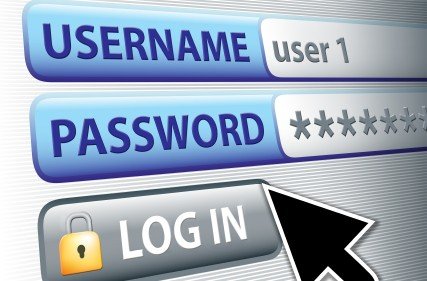We live in a digital age we’re most of us have more online accounts than we can count. Some accounts contain really sensitive information like logins for you bank and credit card accounts. That is why it’s more important than ever to develop good password habits. Here’s a trick I learned to created secure passwords that are easy to remember. Slate writes:
“Right now you’re scrambling to change all your passwords. If you’re not, you should be. In the wake of a couple of massive security breaches—one at LinkedIn that nabbed 6.5 million passwords and another at eHarmony that compromised 1.5 million accounts—security experts are advising that people change their passwords at the affected sites and at every other site where you used a similar password. By now you’ve probably heard the time-worn guidelines for creating strong passwords: Don’t use your name or other common words. Use different passwords for different sites. Change them often. Choose security questions that don’t involve information that everyone knows about you, or stuff that crooks can easily find on Facebook.
For a lot of people, myself included, these rules are too much trouble.”
“The old, still very good way to fix your terrible passwords: Come up with a short phrase you’re likely to remember. Just like in school, it helps to make your mnemonic really bizarre—the stranger the phrase, the easier it’ll be to remember. For example, Kim Kardashian is the most amazing woman in all 50 states, or Mitt Romney and Barack Obama decided to make 10 waffles. Notice that my phrases use a mix of capitalized and lowercase words, and I added some numbers as well.
To make a password, just take the first letter of each word in your phrase. The sentences above would turn into KKitmawia50s and MRaBOdtm10w. Both of those passwords are extremely strong—they’re long, and they’re free of common English words that can be guessed by a computer.
You can generate different passwords for different sites by varying your phrase slightly for each one. The phrase LinkedIn is terrible at securing its passwords so it’s my 10th favorite social network will create a password for LinkedIn (LIitasipsim10fsn) as well as for Twitter (Titasipsim9fsn), Facebook, MySpace, and on and on.
Note, too, that it’s OK for you to keep similar passwords at similar sites. On sites where a password thief can’t do much damage—say, publications like Gawker and the New York Times—you can repeat the same password. You’ll want to keep your social networking accounts slightly more secure, but the passwords don’t have to be extremely different; after all, if a bad guy gets into your Facebook account, he’s not going to be able to do much more additional damage if he gets into your Twitter profile, too. So varying them slightly—as I did above—is perfectly OK, as long as you remember to change them after you hear about a breach like the one at LinkedIn.
You’ll want to reserve the most distinct passwords for sites where breaches would cause you a lot of trouble—your financial institutions and your webmail accounts, which hold the keys to the rest of your online life. (If a bad guy gets into your email, he can use the password reset feature to get into lots of other accounts, too.)”








